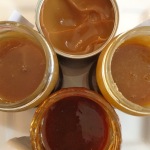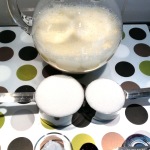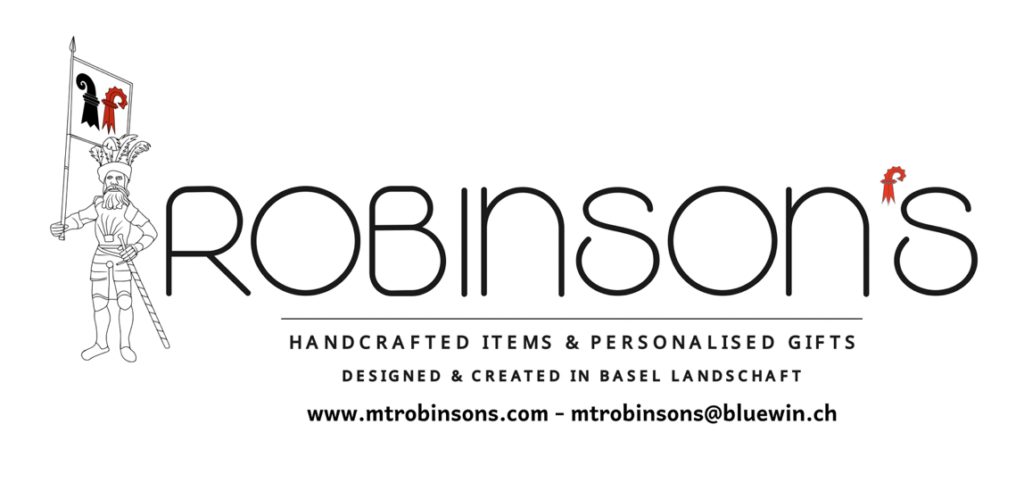Note: Part of innovation is exploration. As part of the Knickerbocker Glory blog we will be doing a column called What if.. Consider What if… as little experiments in cooking to see what happens when new thinking is brought to a subject or old problems are turned upside down. If you have a What if… question you would like answered, leave a comment and we will see what we can do to answer it.
Dulce de Leche
It is summer and that means bar-b-que, but I am having a hankering for for one of my favorite sweets – Dulce de Leche. Those sweet, ooey-gooey, spoonfuls of deliciousness that go well beyond caramel are something to behold. And, oh is it versatile – you can use in everything from crepes to rice pudding to ice cream, even PB and DDL sandwiches. Mmmmm….
I usually just take a few cans of sweetened condensed milk and set them aboil in water for about 3 hours. Let the cans cool, pop the top and eat up. But, I got to thinking – What if a we wanted a vegan version of this treat? Could it be achieved with store bought soy or almond milk? No, I am not a vegan, but I am up for the challnege of heating my kitchen up on these summer days to see if a great Vegan DDL could be achieved. Plus, the DDL I usually have is not low in fat so I thought I would try and add that to the mix by using low fat or skim milk products.
Here are the products I used – Soy Milk, Almond Milk and Skim Cows Milk. All available at my grocery store.
Here is the master recipe…
4 cups Soy, Almond, Or Skim Milk
1 1/2 cups sugar
1 tsp vanilla extract
1/2 tsp baking sodaAll the ingredients except the baking soda were brought to a quick boil in a medium pan to dissolve the sugar.
After the sugar was dissolved the baking soda was added.
The Temperature was immediately reduced to a simmer.
The milk mixture was simmered for 90 minutes or until about 1 cup of liquid was remaining. During the first hour the mixture was stirred occasionally. During the last 30 minutes the mixture was stirred more frequently. The liquid was measured using a heat safe measuring cup so the amount was not reduced to less than a cup. In each case, the mixture was simmered 90 minutes. More time was not needed.
To create a hero DDL, the labels from 2 cans of sweetened condensed milk were removed. The cans were submerged in a large pot of boiling water such that the cans were fully covered. The cans were boiled for 3 hours. If necessary, water was added to keep the cans covered.
The Results
Just by looking at them you can see that there were differences.

Top-Hero Using Sweetened Condense Milk. Right-DDL Using Soy Milk. Bottom-DDL Using Skim Cows Milk. Left-DDL Using Almond Milk.
There was also a huge difference in taste. The hero DDL had the caramel and, what I would call, distinct brown flavor notes thats go with DDL. YUMMY! The same was found in the Skim Milk DDL. YUMMY! The Skim Milk DDL was much less silky than the hero, but it would certainly work where DDL was needed. Even just out of the spoon! And, since it had no fat, that was a bonus. The taste of the vegan versions was much different. They tasted more like caramel corn. The soy version was much more acceptable. The almond milk version was a bit cloying and had a sickly sweet sort of taste. Not good. The soy version could stand where a need for a vegan caramel corn flavor was needed, but not as a DDL. There was a color difference between the soy and almond milk, the almond Milk was slightly darker.
What would explain these differences.
First, the color differences. Our hero was the same color as the vegan varieties. I never expect DDL prepared this way to get very dark. The reason is because the temperature of the cans never differs throughout cooking. The level of caramelization wont change. There is a second factor in the color of DDL, the browning of the proteins. The technical term for this is called Maillard reactions. This browning is the result of the chemistry between the sugar and certain amino acids in the sweetened condensed milk (we see this type of browning in other foods like the crust of breads). Since the conditions the cans are under do not really change (temp, internal pH, concentration in the can) the amount of browning would also be limited. Some suggest that you can boil the cans for longer and get a darker DDL, but I have not been able to get this to work (perhaps this topic should be another What if…column!). The skim milk version however, was an incredibly rich, golden brown. It has real depth of color. This is the Maillard reaction in action. Sure, some of it was because of caramelization, but a lot of it was because of Maillard reactions. The conditions of the skim cows milk were changing throughout the cooking (mixture got hotter, ingredients were concentrating, pH changing) which drives not just more reactions, but different reactions, too. So, what happened to the color of our vegan DDL. They were put under the same conditions. With the almond milk it is slightly more straight forward – there was hardly any protein in the almond milk. The almond milk contained 0.5g protein/100mL of milk while the soy milk and cows milk contained 3.5 and 3.7g/100 mL, respectively. This certainly made a difference. It is worth noting that the amino acids that are involved in the Maillard reactions, lysine and proline, are found both in cows milk and soy milk. Why the poor color in the soy milk version then? Above it is noted that the Maillard reactions are due to sugar and protein. The sugar in these reactions need to be a certain type, called a reducing sugar. We won’t delve in to reducing sugars here. It is sufficient to know that the lactose in the cows milk is a reducing sugar. Soy and almond Milk do not contain any reducing sugars. The soy has the right amino acids, but no reducing sugars. The almond milk is missing both. Why was the almond milk darker than the soy? Hard to say. Perhaps, for other reasons, there was more caramelization in the almond milk version.
The flavor is also affected by Maillard reactions. Without these reactions, the soy and almond milk had no hope of coming close to the cows milk or hero DDL. The caramelization plus the concentration of the almond or soy flavors were likely the biggest drivers of that popcorny, even beany flavor. Of course, even if there were Mailard reactions occurring and the soy milk had similar amino acids as the cows milk, there is no guarantee that there would be a similar flavor profile.
To get closer to a Vegan DDL using soy or almond milk the first thing that needs to be overcome is the reducing sugar. Table sugar is not a reducing sugar so it does not help. Adding lactose is out as that would not be purely vegan. Other reducing sugars, like glucose could do the trick and should be easier to get than others like maltose. Some starches can also be used as reducing sugars, but a lot may be needed. As far as the almond milk is concerned, a more protein rich almond milk is needed. Almond meal could be added but that may affect texture. Perhaps a protein rich almond milk is available in the store.
In the next What if…, we will continue to chase a vegan Dulce de Leche. Stay Tuned!
If you have a What if… question let us know all about it in the comments or on Facebook.
The Culinary Exchange can also be found on Twitter, Instagram, Pinterest, Google+ and YouTube.
Come On! Follow Along!









Did you ever find a better solution for vegan dulce de leche?
Still working on a solution Natasha. Without those reducing sugars, it is hard to get the nuanced flavors.
Hello! Could you try to make dulce de leche with flax milk? Do you think it would turn out better? Flax milk is vegan, and is a lot less flavorful than soy and almond milk.
I am not su sure it would turn out better. THere are probably not enough reducing sugars in flax milk to get all those interesting subtle dulce de leche flavors. Of course, it is always worth a try!
Ripple pea protein milk contains 8g let 8 fl ounces and one could always add dextrose powder to sub for the lactose found naturally in milk. Also a tiny bit of nutritional yeast might add more complex flavor.